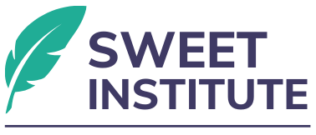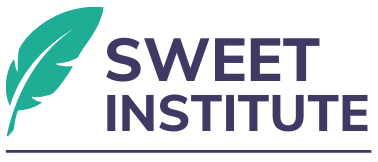Solution-Focused Brief Therapy: The Miracle Question

Solution-Focused Brief Therapy: The Miracle Question
Solution-Focused Brief Therapy (SFBT)[1] is a therapeutic approach that emphasizes solutions rather than problems, helping clients envision and achieve their desired future. A central technique in SFBT is the miracle question, a powerful tool designed to help clients identify and articulate their goals and aspirations. Developed by Steve de Shazer and Insoo Kim Berg, the miracle question is a key element in fostering a forward-looking and solution-oriented mindset in clients.
The Miracle Question: What It Is and How It Works
What Is the Miracle Question?
The miracle question is a thought-provoking prompt that therapists use to help clients imagine a future where their current problems have been resolved. It invites clients to envision an ideal scenario where a “miracle” has occurred overnight, and their issues have disappeared.[2] This imaginative exercise encourages clients to think about what would be different in their lives and how they would know that the miracle had taken place.
How Does It Work?
- Encouraging Imagination and Possibility: The miracle question opens the door to creative thinking and allows clients to explore possibilities without the constraints of their current situation.[3] This exercise helps clients break free from negative thought patterns and consider positive changes they might not have previously thought possible.
- Identifying Goals and Desires[4]: By imagining a problem-free future, clients can identify their true goals and desires.[5] The miracle question helps clarify what clients genuinely want to achieve, providing a clear direction for the therapeutic process.
- Highlighting Differences: Clients are asked to describe in detail what would be different if the miracle occurred. These differences highlight specific, actionable changes that clients can work towards, making the abstract idea of a better future more concrete and attainable.
- Fostering Hope and Motivation: Envisioning a positive outcome can foster hope[6] and motivation. Clients often feel more empowered and optimistic after considering the potential for positive change, which can enhance their engagement and commitment to therapy.
Implementing the Miracle Question in Therapy
The Classic Miracle Question[7]
The classic formulation of the miracle question is as follows:
“Suppose tonight, while you are asleep, a miracle happens, and the problem that brought you here is solved. However, because you were sleeping, you don’t know that the miracle has happened. When you wake up tomorrow, what will be different that will tell you that the miracle has happened?”
Steps for Using the Miracle Question
- Introduce the Question: The therapist gently introduces the miracle question, explaining that it is a way to explore the client’s goals and desired outcomes. It is important to create a supportive and non-judgmental environment to encourage open and imaginative responses.
- Guide the Exploration: After posing the miracle question, the therapist guides the client through a detailed exploration of their envisioned future. Follow-up questions help clients elaborate on what they see, hear, feel, and do differently in the miracle scenario.
- Example Follow-Up Questions:
-
-
- “What is the first thing you notice when you wake up that tells you the miracle has happened?”
- “How do you feel in this new reality?”
- “What are you doing differently throughout your day?”
- “How are your relationships different in this scenario?”
-
- Identify Concrete Changes: As clients describe their miracle scenario, the therapist helps them identify specific, concrete changes that indicate progress towards their goals. These changes become the foundation for setting actionable steps in the therapeutic process.
- Connect to the Present: The therapist and client work together to connect the envisioned future to the present.[8] This involves identifying small, manageable steps that the client can take to move towards their desired outcome, using the differences highlighted in the miracle scenario as a guide.
-
-
- Example: “You mentioned that in the miracle scenario, you feel more confident at work. What is one small thing you can do this week to start building that confidence?”
-
Benefits of the Miracle Question
- Clarifies Goals: The miracle question helps clients clarify their goals and desired outcomes, providing a clear direction for therapy. This clarity can make the therapeutic process more focused and effective.
- Enhances Motivation: By envisioning a positive future, clients often feel more motivated to work towards their goals. The hope and optimism generated by the miracle question can enhance clients’ engagement and commitment to therapy.
- Encourages Positive Thinking: The miracle question shifts the focus from problems to solutions, encouraging clients to think positively and constructively about their future.[9] This positive thinking can improve clients’ overall outlook and well-being.
- Promotes Practical Action: By identifying specific changes in the miracle scenario, the miracle question helps clients develop practical, actionable steps towards their goals. This concrete focus ensures that therapy leads to tangible progress and meaningful change.[10]
In conclusion, the miracle question is a powerful and transformative technique in Solution-Focused Brief Therapy that encourages clients to envision and articulate their desired future. By fostering imagination, clarifying goals, and promoting practical action, the miracle question helps clients move towards positive change and achieve their aspirations. This future-focused approach not only enhances the therapeutic process but also empowers clients to create a more hopeful and fulfilling reality.
[1] Duncan, Barry L., Mark A. Hubble, and Scott D. Miller. Handbook of solution-focused brief therapy. Jossey-Bass, 1996.
[2] De Shazer, Steve, et al. More than miracles: The state of the art of solution-focused brief therapy. Routledge, 2021.
[3] Strummer, Joe. “ENGAGING THE IMAGINATION.” Doing Something Different: Solution-Focused Brief Therapy Practices (2010): 119.
[4] Taylor, Elizabeth R., Amanda Allison, and Becky Southard. “The Miracle Question and other Goal-Setting Techniques.” Solution-Focused Therapy with Children and Adolescents. Routledge, 2019. 114-137.
[5] Sebastian, Kavitha, and Waheeda Matheen. “HOW DOES THE MIRACLE QUESTION WORK ITS MIRACLE?.” SOLUTION FOCUSED PRACTICES IN BEHAVIOURAL SCIENCES: 122.
[6] Steinbrecher, Elijah, Sara Smock Jordan, and Brie Turns. “Providing immediate hope to survivors of natural disasters: A miracle question intervention.” The American Journal of Family Therapy 49.2 (2020): 204-219.
[7] Strong, Tom, and Nathan R. Pyle. “Constructing a conversational “miracle”: Examining the “miracle question” as it is used in therapeutic dialogue.” Journal of Constructivist Psychology 22.4 (2009): 328-353.
[8] Evans, Nicola. “Using a solution-focused approach.” Therapeutic Skills for Mental Health Nurses (2016): 49.
[9] Grant, Anthony M. “Making positive change: A randomized study comparing solution-focused vs. problem-focused coaching questions.” Journal of Systemic Therapies 31.2 (2012): 21-35.
[10] Takagi, Gen, et al. “Impact of self and therapists’ evaluation of responses to miracle question and goal: Survey of Japanese undergraduate and graduate students.” Journal of Solution Focused Practices 5.2 (2021): 3.






